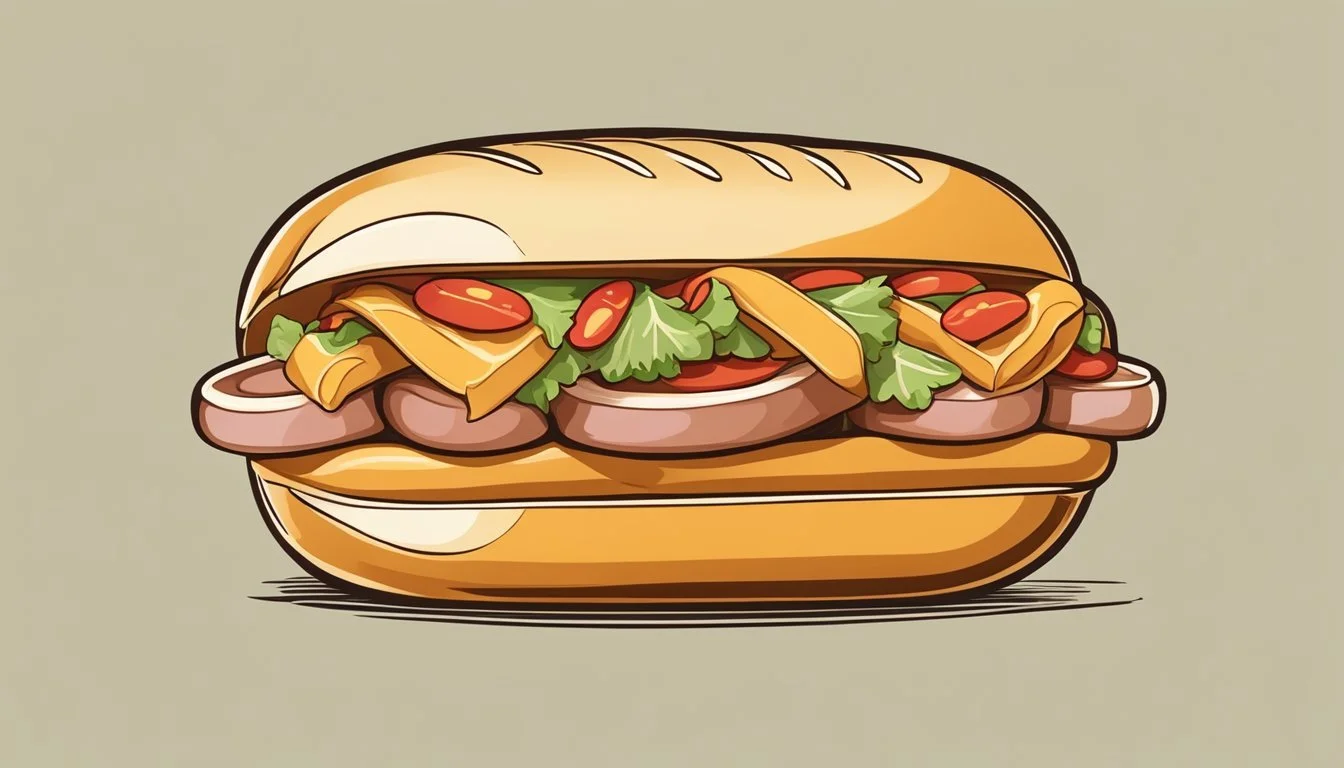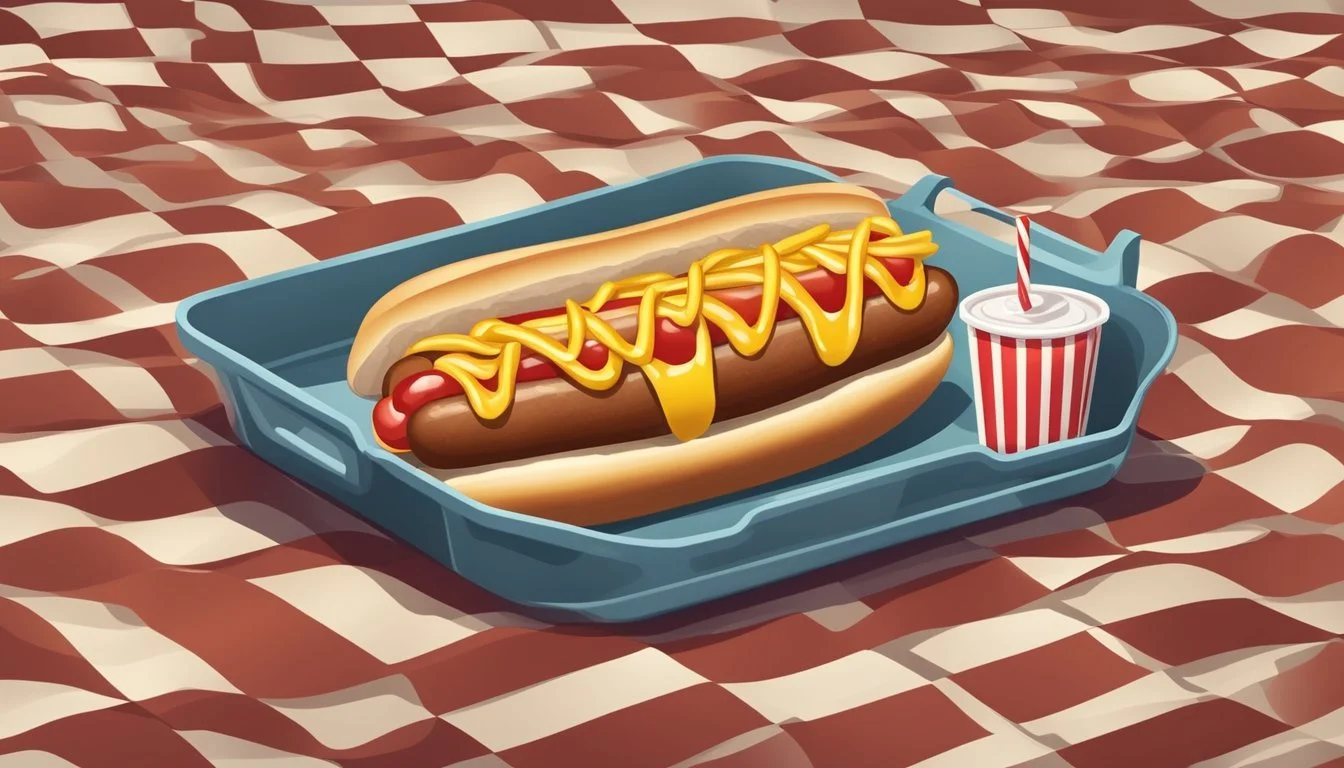How Do You Eat a Hot Dog?
Tips for Savoring Your Frank the Right Way
Eating a hot dog may seem like a simple task, but there is more to it than meets the eye. A hot dog, traditionally a seasoned sausage served in a sliced bun, is a popular snack at sporting events, barbecues, and fast-food establishments. They come with a variety of condiments and toppings that can affect the overall eating experience. There is a technique to assembling and consuming this quintessential American food that can enhance its enjoyment.
While personal preferences play a significant role in how one might enjoy a hot dog, there are some generally accepted practices. One starts by properly placing the cooked sausage within the bun, ensuring that the meat extends evenly from both ends. This allows for a balanced bite. Toppings and condiments are then applied; the order and selection of these can be crucial. Wet condiments like mustard are often put directly on the sausage, while other ingredients like onions, relish, or sauerkraut may be layered on top.
There is even etiquette to be considered, whether for practical reasons or to respect traditions. For instance, it is considered good manners to eat hot dogs with hands rather than utensils, and it is often preferred to dress the dog rather than the bun to avoid a mess. Additionally, consuming a hot dog should ideally be done in five to seven bites, according to some etiquette guides. The simplicity of the hot dog belies the variety of ways it is prepared and served, making it a food that is both accessible and nuanced in its consumption.
Historical Background
The hot dog, as an iconic food item, comes with a rich history and has undergone significant transformations. Understanding its origins and the variety of ways it has evolved helps in appreciating this culinary staple.
Origins of the Hot Dog
The hot dog is believed to have originated from the humble sausage, a culinary invention that spans back millennia. The sausage's history is linked to efforts to preserve meat. Historical records suggest that the sausage was a method developed by civilizations to utilize every part of hunted animals. The ingredients typically included pork, beef, or a combination of meat stuffed into casings made from animal intestines.
One relevant tale points to the Roman empire, with anecdotes referencing Emperor Nero's cook—Gaius—who may have serendipitously invented the sausage. It's suggested that upon not cleaning a pig properly before cooking, Gaius pierced the animal's belly, leading to puffed intestines which resemble the sausage's shape. The term "hot dog" itself, with its mysterious etymology, started to gain popularity in the United States around the late 19th century, particularly in the New York area which became known as a hot dog hub.
Evolution of Hot Dog Varieties
Over time, hot dogs have evolved into various forms, reflecting the diversity of American culture and regional preferences. Here is a brief overview of some hot dog variations:
Classic Frankfurters: Originating from Frankfurt, Germany, these are usually made with pure pork.
Beef Hot Dogs: Made entirely of beef, they're a common type in many parts of the U.S.
Combination: Many hot dogs are made with a mix of beef and pork to achieve a specific flavor profile.
Each region has adapted the hot dog to its local tastes, leading to an array of condiments and side dishes that make every hot dog experience unique. Whether it's the simple addition of mustard or ketchup or the incorporation of more complex toppings like chili or sauerkraut, the hot dog continues to be a platform for culinary creativity and regional expression.
Selecting Quality Ingredients
When crafting the ultimate hot dog, one must prioritize high-quality ingredients from the meat used to the freshness of toppings, as these elements significantly affect the taste and overall experience.
Choosing the Right Meat
The meat in a hot dog defines its flavor profile. Organic meats, such as chicken or beef, often signify a higher quality as they are uncured and contain fewer preservatives. Look for labels stating "no added nitrates or nitrites" except those naturally occurring in ingredients like celery (how long does celery last?) juice. Opting for meat with low saturated fat content is often a sign of a healthier option.
Bun Types and Textures
The bun serves as the vessel for the hot dog and should complement the meat's flavors. There are a variety of bun types to consider:
Plain buns are traditional and focus the eater's palate on the meat and toppings.
Buns with sesame seeds add a nutty flavor and a subtle crunch.
Specialty buns, such as those infused with sun-dried tomatoes or basil, can enhance the hot dog with a unique twist.
Choosing the right texture is equally important; a bun that's too dense may overwhelm the hot dog, while a light, fluffy bun may not provide adequate support.
Freshness of Toppings
Toppings add character and should be as fresh as possible. It's important to select toppings that won't overpower the flavor of the hot dog but will enhance and complement it. Common toppings to consider include:
Spices: Fresh or dried, they can be used to season the meat or add a kick to the condiments.
Vegetable toppings: Pickles, onions, and sauerkraut should be crisp and colorful, indicating freshness.
The key is to select each component with an eye for freshness and quality, paying close attention to how each will contribute to the final taste of the hot dog.
Preparation Methods
The right preparation methods enhance the flavors and textures of hot dogs. It involves not only cooking the hot dog to perfection but also preparing the bun to complement the sausage.
Cooking the Hot Dog
Grilling: For outdoor enthusiasts, grilling hot dogs over a barbecue provides a smoky flavor. Ensure the grill is preheated to a medium-high temperature before placing the hot dogs on the grate. Rotate them every few minutes to cook evenly and obtain those characteristic grill marks.
Boiling: A traditional and quick method involves boiling hot dogs in water. One needs just to bring a pot of water to a rolling boil, add the hot dogs, and let them cook for about 4-5 minutes or until they are heated through.
Microwaving: If time is of the essence, one can microwave hot dogs. Place them on a microwave-safe plate, cover them with a paper towel, and cook for about 30-45 seconds per hot dog.
Oven Roasting: Preheat the oven to 400°F (200°C). Arrange hot dogs on a baking sheet and roast them for 10-15 minutes. Turning the hot dogs halfway through will ensure they cook evenly.
Toasting or Warming the Bun
Oven: One can warm hot dog buns in the oven by preheating it to 350°F (175°C). Wrap the buns in aluminum foil and heat them for about 7-10 minutes until they are warm.
Grill: For those already grilling hot dogs, one can toast the buns on the grill for a minute or two. It's important to keep a close eye on them to prevent burning.
Microwave: For a soft and warm bun, a microwave can be used. Wrap the bun in a paper towel and microwave for about 10-15 seconds. However, this method won't add any toasting.
By following these specific methods, one can ensure the hot dogs and buns are prepared to their liking, leading to a more enjoyable eating experience.
Building the Perfect Hot Dog
Creating the perfect hot dog involves a harmonious blend of bun, sausage, condiments, and toppings, each chosen to complement the other for a satisfying and flavorful experience.
Layering Condiments and Toppings
The foundation of flavor lies in the careful selection and application of condiments. One should start with wet condiments like mustard or mayonnaise, ensuring they are spread evenly across the length of the sausage. Traditional mustard is favored for its tangy and sharp taste that complements the savory notes of the hot dog.
Ketchup, while sometimes debated, is popular for its sweet and tart profile.
Relish offers a sweet or sour crunch and onions give a sharp, aromatic kick.
For heat and complexity, chili can be ladled on top.
Sauerkraut adds a note of pickled tang while also providing a textured crunch.
To ensure each bite is flavorful, the toppings should not overflow the bun. This balance is key to a well-composed hot dog.
Adding Cheeses and Spices
Cheese can transform a simple hot dog into a decadent chili cheese dog, or it can accentuate the overall flavor profile with its creamy texture and sharp taste.
Cheese Type Flavor Profile Cheddar Sharp and rich Monterey Jack Mild and melty Pepper Jack Spicy and zesty
Finishing spices and herbs can elevate the flavor. A light sprinkle of celery salt can add an earthy, slightly bitter contrast. Salt and pepper are the trusty duo that should be used moderately to enhance the natural flavors.
For a Chicago-style dog, a dash of celery salt is essential.
Herbs like parsley can be sprinkled for a fresh, green note.
In assembling these components, the eater is the artist, and the hot dog is their canvas, allowing for a personalized culinary creation.
Proper Hot Dog Etiquette
Eating a hot dog involves a set of customs designed to maximize the experience while maintaining neatness. These unwritten rules focus on how to hold and take a bite, as well as methods for keeping clean during the process.
Holding and Biting Techniques
Holding: Users should always use their hands when eating a hot dog. The proper grip involves both hands, lightly encasing the bun so that it provides support without squashing it. Fingers should curve around the bun, allowing the thumbs to rest on top for balance.
Bite Size: When taking a bite, it should be neither too small nor too large. A bite should be clean, capturing both the sausage and the bun in a single motion.
Biting Angle: The hot dog should be approached from an upward angle, ensuring that toppings are less likely to spill.
Napkin Usage and Cleanliness
Napkins: Individuals should prepare by having napkins—paper or cloth—at the ready. A napkin should be placed either on the lap or within immediate reach if one is consuming a hot dog while standing.
During the Meal: Use the napkin to dab away any condiments that may have reached the corners of the mouth. After each bite, ensure any residue on fingers is promptly removed to maintain cleanliness.
Post-Meal: Once the meal is concluded, hands and the mouth should be thoroughly wiped. If a plate was used, it should be held with the non-dominant hand and used to catch any falling pieces or drips during consumption.
Serving and Presentation
When preparing to serve hot dogs, attention to detail in presentation and choice of accompaniments can enhance the overall experience. The manner in which hot dogs are arranged and the selection of beverages and sides are integral to proper service.
Arranging on Plates and Trays
For service, hot dogs should be presented in a way that is both functional and aesthetically pleasing. Paper plates are recommended for casual settings, aligning with tradition and ease of cleanup, while everyday dishes may be used for more intimate gatherings. Serving on fine china is not customary. Hot dogs are traditionally laid out on trays or plates with the sausages neatly in buns, and any condiments should be applied in a manner that complements rather than overwhelms the hot dog. The hot dogs can be secured with colored toothpicks or cocktail forks for added flair and ease of handling. It is suggested that they be arranged so that any extra meat overhangs the bun equally on both sides.
Accompanying Beverages and Side Dishes
The choice of beverages is key to complementing a hot dog meal. While wine is typically discouraged, an array of other options such as beer, soda, lemonade, and iced tea are suitable and provide a refreshing contrast to the savory dogs. When presenting side dishes, one must balance simplicity with variety; popular side dishes include chips, pickles, and a simple coleslaw or salad. All items should be easy to eat, possibly with the aid of forks, and not compete with the taste of the hot dogs. A thank you note or sign may be included on the serving table to offer a personal touch to the gathering.
Hot Dog Variations
Hot dogs are not just a simple, standard fare but come in an array of variants to cater to diverse regional preferences and dietary requirements. From the ingredient composition of the sausage to the array of toppings, each style and diet option offers a unique take on this classic dish.
Regional and International Styles
Chicago Dog: A standout style known for its poppy seed bun and a host of toppings including yellow mustard, green relish, fresh chopped onions, tomato slices, pickled sport peppers, a dill pickle spear, and a dash of celery salt. This variant refrains from using ketchup.
New Jersey's Offerings: Home to several unique variations such as:
Italian Dogs: Loaded with peppers, onions, and potatoes.
Rippers: Deep-fried until the casing rips open.
Texas Wieners: Feature a chili sauce on top.
Foot-Longs: They are an extended version of the traditional hot dog, offering more space for toppings and an extra bit of indulgence.
Cocktail Wieners: These miniature hot dogs are often served as appetizers or during parties, commonly with dipping sauces or wrapped in puff pastry or bacon (how long does bacon last?).
Halal and Kosher Variants: Adhering to specific religious dietary laws, these hot dogs are made with meats that are processed and prepared according to Islamic or Jewish dietary guidelines, respectively.
Alternative Diet Options
Vegetarian and Vegan Options: These plant-based alternatives are made from ingredients like soy, peas, and other legumes to offer a meat-free experience while mimicking the texture and flavor of traditional hot dogs.
Chicken and Turkey Dogs: For those who prefer poultry over beef or pork, these hot dogs provide a different flavor profile and are often considered a leaner option.
Bacon-Wrapped Varieties: A decadent version of the standard hot dog, often found in regions that favor a rich and savory profile, involving the hot dog being wrapped in bacon prior to cooking.
By recognizing and catering to various regional preferences and dietary needs, the world of hot dogs continues to evolve, offering something for everyone to enjoy.
Health and Nutritional Considerations
When considering the health implications of consuming hot dogs, it’s essential to examine nutritional components such as calories, sodium, and fat. A typical beef hot dog contains, on average, approximately 150 calories, including around 13 grams of fat, of which 5 grams may be saturated. Notably, each hot dog also imparts about 450 milligrams of sodium.
In terms of sodium and fat content, consumers should be mindful of their intake, as these are nutrients often consumed in excess in many diets. The American Heart Association recommends no more than 2,300 milligrams of sodium per day, with an ideal limit of no more than 1,500 mg for most adults, considering the risk of hypertension and heart disease linked to high sodium consumption.
Furthermore, when adding common condiments and sides:
A white hot dog bun typically adds an additional 120-126 calories and compounds the intake with about 200 milligrams of sodium.
A tablespoon of ketchup can contribute 17 calories, 154 milligrams of sodium, and 3.6 grams of sugar.
A teaspoon of yellow mustard is comparatively lower in calories and sodium, providing just 3 calories and 55 milligrams of sodium.
To balance these nutritional considerations, portions should be moderated, and one may seek out healthier hot dog alternatives, such as those manufactured with leaner meats or those that are uncured and contain no added nitrates or nitrites. Consumers interested in maintaining a healthier diet may consider these options alongside appropriate portion sizes and accompaniments with lower sodium and fat content.
Event Planning with Hot Dogs
Event planning with hot dogs can be both a fun and convenient option for hosts. They are versatile for various types of gatherings and can be prepared with minimal effort, allowing for more time to engage with guests.
Backyard Barbecues and Picnics
For backyard barbecues and picnics, hot dogs are a classic choice. They require simple grilling equipment and can be cooked relatively quickly, catering to a casual and relaxed atmosphere. A picnic table might be set with a variety of condiments, allowing guests to customize their hot dogs to their preferences. For clean-up, organizers should provide designated bins for trash and recyclables to ensure a smooth post-event process.
Example setup for a Hot Dog Barbecue:
Grills: Arrangement of one or more depending on the guest count
Condiments: Mustard, ketchup, relish, onions, sauerkraut, cheese, chili
Sides: Chips, coleslaw, baked beans, potato salad
Beverages: A selection of soft drinks, water, and perhaps beer for adults
Dessert: Simple treats like watermelon slices or ice cream
Large Scale Events and Gatherings
For larger events such as family reunions or community fundraisers, planning a hot dog menu can be cost-effective and scalable. High-capacity grills or even hot dog rollers can accommodate the preparation of larger quantities efficiently. Organizers may consider a hot dog bar approach where guests have the option to self-serve from a range of toppings and sides. The hot dog bar can also serve as an interactive element of the event, engaging attendees as they assemble their own creations. Preparing for a sizable group requires attention to volume; utilizing calculators or planning tools ensures accurate estimates of food quantities needed.
Suggested Quantity Guide for Large Gatherings:
Attendees Hot Dogs Buns Total Condiments 50 100 100 Assorted, in bulk 100 200 200 Assorted, in bulk 200 400 400 Assorted, in bulk
One should also ensure there are firm plans for the clean-up process to manage waste efficiently and sustainably.
Creative Serving Ideas
Hot dogs serve as a versatile canvas, opening the door to myriad creative serving options suitable for various themes and interactive dining experiences.
Themed Parties and Occasions
At a themed party, serving hot dogs can transcend the ordinary by aligning the presentation and selection of dressings with the chosen theme. For a sports-themed event, one might create hot dogs reminiscent of those found at ballparks, complete with stations for classic condiments like ketchup, mustard, and relish. At a Halloween party, hot dogs can be arranged in a way that they resemble spooky characters, using clever cuts and strategically placed toppings.
For a summertime beach party, guests can indulge in tropical-inspired hot dogs, featuring pineapple, bacon, or teriyaki sauce.
Interactive Hot Dog Bars
An interactive hot dog bar invites guests to partake in a fun, do-it-yourself experience. Set up a toppings bar with a variety of condiments, allowing diners to customize their hot dogs to their liking. One can offer a range of traditional and inventive toppings, ensuring there’s something to please every palate.
Components of an elaborate hot dog toppings bar might include:
Category Toppings Classic Ketchup, mustard, relish, onions, sauerkraut Cheese Shredded cheddar, nacho cheese sauce, cream cheese Veggies Coleslaw, jalapeños, olives, pickles, banana peppers Deluxe Chili, grilled mushrooms, avocado slices, bacon bits Global Pico de gallo, sauerkraut, kimchi, curry sauce
Such an interactive setup not only adds an element of fun but also encourages guests to be playful and perhaps even discover a new favorite way to enjoy a hot dog.
Technological Innovations
In recent years, technological advancements have profoundly influenced the way people cook and consume hot dogs. From innovative cooking gadgets to easily accessible recipe and tutorial videos, there is no shortage of resources that cater to hot dog enthusiasts.
Cooking Gadgets and Accessories
Gadgets: An array of culinary gadgets have surfaced to simplify the hot dog cooking process. Notable inventions include hot dog toasters that allow for simultaneous toasting of buns and franks and specialized hot dog steamers which ensure evenly cooked sausages with minimal effort.
Utensils: The spatula and the tongs remain essential utensils in hot dog preparation. The spatula is particularly useful when flipping hot dogs on a skillet or grill to achieve an even char. Meanwhile, tongs are indispensable for their precision and safety, providing a firm grip on hot dogs during cooking and serving.
Skillet and Grills: Non-stick skillets with built-in grooves replicate the grill experience indoors. These skillets are built with an emphasis on heat distribution to cook hot dogs evenly. Outdoor grills with enhanced features like adjustable thermostats have also grown in popularity, enhancing cookout experiences.
Recipe and Tutorial Videos
Video Resources: The rise of video platforms has made it easier for cooks to learn new recipes and techniques. High-definition recipe and tutorial videos are readily available, guiding viewers through the process of creating everything from a classic grilled hot dog to gourmet versions with inventive toppings.
Content Variety: These videos cover a wide range of topics, from selecting the right type of hot dog to achieving the perfect grill marks. They frequently showcase innovations in hot dog preparation, utilizing gadgets and accessories to simplify cooking or enhance flavor.
Conclusion
Eating a hot dog can be a delightful experience when done with attention to etiquette and consideration for personal health. Proper technique in dressing a hot dog involves selecting appropriate condiments, with a focus on the meat rather than overloading the bun. Traditional condiments such as mustard are recommended, while ketchup is often debated in adult consumption.
From a health perspective, indulging in hot dogs should be done in moderation. Despite their convenience and taste appeal, they are processed foods high in sodium and preservatives. Nutrition experts suggest that while an occasional hot dog can be part of one's diet, it is best to consume them sparingly to avoid potential health drawbacks.
When enjoying hot dogs, one can also opt for variations such as vegetarian or lower-sodium options, balancing the enjoyment of this classic food with a nod toward health consciousness. The key is to savor each bite, enjoy the flavors, and remain aware of the implications of regular consumption. Remember that balance and moderation are essential in any diet.









